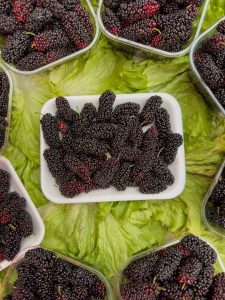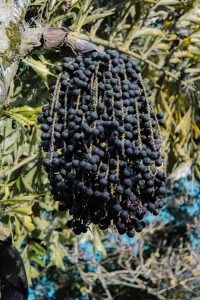
What Is a Pomelo?
A pomelo is a large citrus fruit that belongs to the Rutaceae family, closely related to grapefruits and other citrus varieties. Known scientifically as Citrus maxima, this fruit is the largest among citrus fruits and has a thick, green or yellow peel with a sweet and mildly tart taste. Native to Southeast Asia, the pomelo is cultivated in various tropical and subtropical regions around the world.
The pomelo’s flesh can range from pale yellow to pink or red, depending on the variety. Its texture is both juicy and firm, resembling that of a grapefruit but milder in flavor. Rich in vitamins, particularly vitamin C, and other antioxidants, pomelos offer health benefits and are a refreshing addition to salads or enjoyed on their own.
Pomelos have a cultural significance in some regions, symbolizing prosperity and good luck. With their unique taste and nutritional benefits, pomelos have become a popular and versatile fruit in culinary practices globally.
Why Do We Eat Pomelos?
People eat pomelos for several reasons, including their unique flavor, nutritional benefits, and cultural significance. Here are some reasons why pomelos are commonly consumed:
- Flavor and Taste:
- Pomelos have a sweet and mildly tart flavor, making them a refreshing and enjoyable fruit to eat. The texture of the flesh is juicy and firm, similar to other citrus fruits but with a milder taste.
- Nutritional Value:
- Pomelos are rich in essential nutrients, including vitamin C, potassium, fiber, and antioxidants. Consuming pomelos can contribute to a healthy and balanced diet, supporting overall well-being and immune function.
- Health Benefits:
- The vitamins and antioxidants in pomelos are associated with various health benefits, such as promoting skin health, boosting the immune system, and supporting cardiovascular health.
- Dietary Inclusion:
- Pomelos can be a healthy addition to salads, fruit bowls, or eaten on their own as a snack. Their versatility in culinary applications makes them a popular choice for those seeking a nutritious and flavorful option.
- Cultural Significance:
- In some cultures, pomelos hold symbolic value and are associated with prosperity, good luck, and the celebration of festivals or special occasions. They may be used in traditional rituals or given as gifts during festive periods.
Ultimately, people eat pomelos for their taste, nutritional content, and cultural relevance, making them a popular and versatile fruit in various culinary traditions around the world.
When Do We Eat Pomelos?
Pomelos are typically in season during the cooler months of the year, varying depending on the specific region and climate. In many places, the pomelo season falls during late autumn to early spring. The exact timing may differ based on the variety of pomelo and the geographical location where it is cultivated.
Here are some general guidelines on when people often consume pomelos:
- Late Autumn to Early Spring:
- This is the primary season for pomelos in many regions. During this time, you are more likely to find fresh, locally grown pomelos in markets and grocery stores.
- Festive Seasons:
- Pomelos are sometimes associated with certain festivals or celebrations, particularly in Asian cultures. For example, they may be enjoyed during the Lunar New Year celebrations in some East Asian countries.
- As a Winter Fruit:
- Given their seasonal availability, pomelos are often enjoyed as a winter fruit when other citrus varieties are also in season.
It’s important to note that due to modern transportation and global trade, fresh fruits like pomelos may be available in some markets year-round, although they are likely to be at their freshest and most abundant during their natural growing season.
Ingredients of Pomelos
The main edible parts of a pomelo are its thick rind, segments of juicy flesh, and seeds. Here are the key components:
- Rind/Peel:
- The thick, spongy, and aromatic outer layer of the pomelo. It is usually discarded before eating, but the zest may be used for flavoring in some culinary applications.
- Flesh/Pulp:
- The inner, edible part of the pomelo is the flesh or pulp. It is juicy, sweet, and mildly tart. The color of the flesh can vary from pale yellow to pink or red, depending on the variety.
- Membranes:
- Membranes separate the segments of the pomelo. They are generally not eaten due to their tough and fibrous nature.
- Segments:
- The flesh is divided into segments or wedges. Each segment is encased in membranes, and it can be easily separated for consumption.
- Seeds:
- Pomelos contain seeds, which can vary in size and number. Some varieties may have larger seeds, while others may be seedless or have smaller, less noticeable seeds.
- Juice:
- The juicy nature of the flesh makes pomelos suitable for extracting juice, which can be used in beverages, dressings, or cooking.
When enjoying pomelos, the most common practice is to peel away the thick rind, remove the membranes to access the segments, and then eat the juicy flesh. Pomelos can be consumed fresh, added to fruit salads, used in desserts, or juiced for refreshing beverages.
Types of Pomelos
There are several varieties of pomelos, each with its own unique characteristics, flavors, and appearances. Some of the popular types of pomelos include:
- Chandler Pomelo:
- Known for its large size, pale yellow to greenish-yellow skin, and sweet, mildly tart flavor.
- Tahitian Pomelo:
- Recognized for its round or slightly pear-shaped appearance, smooth yellow skin, and sweet taste.
- Honey Pomelo:
- This variety is often larger than other types, with a thick, green or yellow rind. It has a sweet and honey-like flavor.
- Thong Dee Pomelo:
- Originating from Thailand, the Thong Dee pomelo is large with a thick, greenish-yellow rind. It has a sweet and slightly acidic taste.
- Kao Pan Pomelo:
- Another Thai variety, the Kao Pan pomelo has a thick, green or yellow skin and sweet, juicy flesh.
- Citrus Maxima or “Common” Pomelo:
- This is a general category encompassing various cultivars of pomelos that may not have a specific name. They are characterized by their large size, thick rind, and sweet, mild flavor.
- Red Pomelo:
- Some pomelos have a reddish or pinkish hue to their flesh. The Red Pomelo is one such variety, known for its colorful appearance and sweet taste.
- Golden Phoenix Pomelo:
- Originating from China, the Golden Phoenix pomelo has a golden-yellow skin and sweet, juicy segments.
It’s important to note that the availability of these varieties may vary based on geographical locations and the time of year. Additionally, local names and preferences for pomelos can differ, contributing to a diverse range of cultivars and types around the world.
Signs of Ripe, Signs of Raw and Signs of Rotten Pomelos
Identifying the ripeness, readiness to eat, and spoilage of pomelos involves observing various signs. Here are some indicators for each stage:
Signs of Ripe Pomelos:
- Firmness:
- A ripe pomelo should be firm but slightly yielding when gentle pressure is applied. Avoid overly soft or mushy fruits.
- Fragrance:
- Ripe pomelos often have a sweet and citrusy aroma. If you can smell a pleasant citrus fragrance, it’s a good sign that the fruit is ripe.
- Color:
- The skin color should be consistent and bright. Depending on the variety, it may be green, yellow, or even pinkish. Avoid fruits with dull or uneven coloring.
- Weight:
- A heavier pomelo for its size indicates juiciness, suggesting that it is ripe and filled with moisture.
- Slight Yielding:
- When you press gently on the surface, a ripe pomelo will give slightly without being too soft.
Signs of Raw (Underripe) Pomelos:
- Hardness:
- An underripe pomelo will feel hard and unyielding when you press it. It may lack the juiciness and sweetness associated with ripeness.
- Green Color:
- Some pomelo varieties are green when unripe. Look for a uniform color and avoid fruits with patches of intense green or signs of immaturity.
- Lack of Aroma:
- Underripe pomelos may lack the sweet, citrusy fragrance that is characteristic of ripe fruits.
- Bitter Taste:
- If you cut into the pomelo and the flesh tastes excessively bitter, it may not be fully ripe.
Signs of Rotten Pomelos:
- Mold or Discoloration:
- Look for any signs of mold, unusual discoloration, or dark spots on the skin or the flesh, as these can indicate spoilage.
- Unpleasant Odor:
- Rotten fruit often emits a foul or fermented smell. If the pomelo has a strong, unpleasant odor, it may be spoiled.
- Excessive Softness:
- A pomelo that feels excessively soft, mushy, or has areas of extreme softness may be rotting.
- Visible Decay:
- Check for any visible signs of decay, such as sunken or shriveled areas, especially around the stem or blossom end.
Always use a combination of these indicators to determine the overall condition of a pomelo. If in doubt, choose fruits that feel heavy for their size, have a vibrant color, and give off a pleasant fragrance without any signs of decay.
Summary
Pomelos, scientifically known as Citrus maxima, are large citrus fruits native to Southeast Asia. They belong to the Rutaceae family and share genetic ties with grapefruits. These fruits are renowned for their distinct sweet and mildly tart flavor, making them a refreshing addition to various culinary applications. The pomelo’s thick, green or yellow peel encases juicy, firm flesh that can range in color from pale yellow to pink or red.
Pomelos offer essential nutrients such as vitamin C, potassium, fiber, and antioxidants. Consuming pomelos can contribute to skin health, immune system support, and overall well-being. The fruit is typically in season during late autumn to early spring, and its availability may vary based on geographic location.
Culturally, pomelos hold significance in some traditions, symbolizing prosperity and good luck. Common varieties include Chandler, Tahitian, Honey, Thong Dee, Kao Pan, and Red Pomelos, each with unique characteristics.
When selecting pomelos, individuals look for firmness, vibrant color, a sweet fragrance, and heaviness. The fruit is enjoyed fresh, added to salads, or used in various culinary creations. With their nutritional benefits, diverse varieties, and cultural symbolism, pomelos stand out as a versatile and nutritious addition to the world of citrus fruits.






